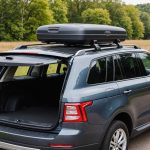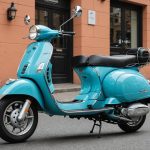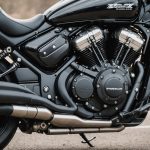Understanding the Importance of Winterizing Your Motorcycle
When it comes to winter motorcycle preparation, understanding the impact of cold weather is crucial. Frigid temperatures can affect your bike’s performance, significantly altering how your engine and fluids behave.
Motorcycles often face several issues during winter months, such as battery failures, increased tire pressure fluctuations, and gelling of fuel, which can catch riders off guard. By comprehending these common issues, you can take proactive steps to avoid frustrating breakdowns and ensure your bike remains in excellent condition.
Also to discover : Essential Guide to Exporting Your UK-Registered Vehicle for Long-Term Travel Abroad
Motorcycle maintenance is key, especially in winter, for preserving and extending the life of your investment. Cold weather can accelerate wear and tear, making preventative maintenance essential. Regularly checking your bike’s battery, tire pressure, and ensuring proper lubrication are just a few measures to keep your two-wheeler in top shape.
The winterizing benefits extend beyond performance. By preparing in advance, you are safeguarding your motorcycle against potential damage, reducing repair costs, and enhancing its longevity. An adequately winterized motorcycle will not only perform better in chilly conditions but also provide a seamless transition into riding season once warmer weather returns.
This might interest you : Top Luxury Cars in the UK for 2023: Discover the Best Fuel Efficiency and Style
Essential Steps for Winterizing Your Motorcycle
Winterizing your motorcycle is crucial to maintain its performance and extend its lifespan. Following a detailed step-by-step winterizing guide can ensure your bike remains in optimal condition during the cold months.
Pre-winter Inspection
Conduct a thorough pre-winter inspection to assess your motorcycle’s health. Begin by examining the tires, ensuring they maintain the correct tread depth and air pressure. Inspect the brakes for wear and tear, and test all lights to verify visibility and functionality. Don’t overlook the importance of fluid levels; check oil, coolant, and brake fluids, and top up if necessary. Evaluate the battery health by ensuring it holds a proper charge; a dead battery in winter can be problematic. Attention at this stage helps in identifying and addressing any existing problems, preventing minor issues from becoming costly repairs.
Cleaning Your Motorcycle
Before storing for winter, a thorough cleaning is imperative. Removing dirt and grime prevents corrosion and preserves the bike’s look. Use recommended cleaning products and methods, such as mild detergents and soft brushes, to avoid damaging paintwork. Once cleaned, applying protective wax or spray helps safeguard the surfaces against moisture-induced rust.
Ensuring these winter maintenance tasks are completed can lead to a well-functioning motorcycle awaiting the next riding season.
Storage Solutions for the Winter
Storing a motorcycle during the winter requires careful planning to ensure it remains in optimal condition. Motorcycle storage options vary, but the choice between indoor and outdoor storage is fundamental. Each has its own set of benefits and drawbacks that should be considered.
Indoor vs. Outdoor Storage
Indoor storage is often preferred for its enhanced protection against harsh weather. It minimises exposure to moisture, reducing the risk of rust and corrosion. Additionally, it ensures higher garage safety by preventing theft and accidental damage. However, it requires sufficient space and can incur costs if professional services are involved.
Conversely, outdoor storage is generally more accessible but demands comprehensive preparation. To safeguard your motorcycle against the elements, it’s vital to implement winter storage tips. Cleaning the bike thoroughly, applying a protective wax coat, and using moisture absorbers are crucial measures to counteract adverse outdoor conditions.
Choosing the Right Motorcycle Cover
Selecting an appropriate motorcycle cover is a critical aspect of effective storage. A good cover blocks moisture and protects against UV rays, yet allows for adequate ventilation. Materials like polyester or oxford fabric are often recommended. When installing, ensure the cover is tight and secure, preventing wind from loosening it. Adjust it regularly to check for damage or wear, maintaining constant vigilance throughout the season.
Maintenance Checklist for Winterizing
When it comes to motorcycle service in preparation for winter, having a detailed winter maintenance checklist is essential. This proactive approach ensures your motorcycle remains in optimal condition throughout the cold months.
Begin with a comprehensive checklist of essential tasks aimed at safeguarding your motorcycle against winter’s harsh elements. Key actions include topping up all fluids such as oil, brake, and coolant. Battery maintenance is crucial; disconnect it if you’re storing your bike long-term. Consistency in executing these tasks cannot be overstated – maintain them regularly throughout winter to prevent any looming issues.
Tasks vary in frequency based on your bike’s usage and storage conditions. Consider a bi-weekly check for diagnosing common issues like battery charge and tire pressure. For motorcycles actively used during winter, more frequent evaluations are suggested – think weekly checks to handle fluctuating temperatures effectively.
Commonly overlooked areas include lubricating chains and checking the integrity of seals and hoses. Failing to inspect these can lead to costly repairs later. Properly covering your bike to shield it from moisture and cold can prevent rust formation, prolonging its life and performance. Remember, thorough preparation now prevents headaches later.
Troubleshooting Common Winter Issues
Cold temperatures can challenge even the most seasoned riders. Knowing how to address winter motorcycle problems is crucial for a smooth ride.
Battery Maintenance
Motorcycle batteries often struggle in colder months, making battery maintenance a priority. Some signs of battery issues include a slow engine crank or dim lights. Ensuring your battery is charged requires regular checks and the use of a smart charger if possible. Smart chargers can adapt to battery conditions, extending your battery’s life.
If your motorcycle is unused for extended periods, consider disconnecting the battery or using a trickle charger. These devices help maintain the charge without overcharging.
An important aspect of battery care is knowing when replacement is necessary. If you notice the battery frequently needs charging or can’t hold a charge, these may be indicators it’s time for a new one.
Tire Care
Tire condition is another vital component. Monitor tire pressure closely; cold temperatures often lead to decreased pressure. Similarly, checking the tread depth ensures adequate grip on potentially slippery surfaces. Using a tread depth gauge helps keep tires within safe limits.
Storing tires correctly prevents damage during the winter months. For those regularly riding in winter, investing in winter tires may be recommended, as they offer enhanced traction and performance in cold conditions.
Recommended Products for Winterizing
Preparing your motorcycle for the colder months can be daunting, but having the right winterizing accessories and maintenance tools can make the process seamless. Below is a list of must-have products to ensure your bike remains in top condition throughout winter.
When considering the best winter products, an essential item is a high-quality motorcycle cover. It protects against harsh elements, preventing moisture and dirt buildup. Battery chargers are also crucial, keeping your battery charged and ready for use even after long periods of inactivity.
Selecting appropriate lubricants and additives is vital. These products maintain the flexibility of rubber and plastic parts while preventing corrosion. To choose the right ones, consider the specific needs of your motorcycle. Look for products with stellar reviews that focus on durability and effectiveness in low temperatures.
Among the popular winterizing products are fuel stabilizers. These prevent the formation of deposits in the fuel system. Regularly using cleaners in conjunction with fuel stabilizers ensures optimal performance once you’re back on the road come spring. By investing in these essential items, your motorcycle will be well-equipped to endure the winter months.
Real-life Examples and User Testimonials
Winterizing a motorcycle can seem daunting, but real-world motorcyclist stories prove otherwise. One rider shared their positive experience after engaging diligently in their motorcycle winterizing process. By following comprehensive steps, like using a high-quality fuel stabilizer and covering their motorcycle to protect against moisture, they ensured seamless rides after winter.
Lessons from Experience
Understanding what works or doesn’t in motorcycle winterizing experiences can make all the difference. A common lesson from numerous user stories is the importance of battery maintenance. Failing to remove and regularly charge the battery led to early depletion for some, illustrating why a proactive approach is critical.
Community Tips
Within motorcycle communities, seasoned riders often exchange practical advice. One invaluable tip is ensuring tires are appropriately inflated to prevent flat spots. Riders often emphasize this among their shared tips to maintain motorcycle integrity throughout the off-season.
These collective insights and lessons underscore the value of learning from each other’s motorcycle winterizing experiences. Gathering advice from seasoned riders ensures preparation for any unforeseen challenges. Testimonials of successful motorcycle winterizing reassure every rider about making the best decisions to safeguard their beloved machines for sunny rides post-winter.











